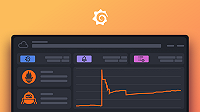This is documentation for the next version of Grafana documentation. For the latest stable release, go to the latest version.
Prometheus template variables
Instead of hard-coding details such as server, application, and sensor names in metric queries, you can use variables. Grafana refers to such variables as template variables. Grafana lists these variables in dropdown select boxes at the top of the dashboard to help you change the displayed data.
For an introduction to templating and template variables, refer to Templating and Add and manage variables.
Use query variables
Grafana supports several types of variables, but Query variables are specifically used to query Prometheus. They can return a list of metrics, labels, label values, query results, or series.
Select a Prometheus data source query type and enter the required inputs:
For details on metric names, label names, and label values, refer to the Prometheus documentation.
Query options
With the query variable type, you can set the following query options:
Selection options
The following selection options are available:
Multi-value - Check this option to enable multiple values to be selected at the same time.
Include All option - Check this option to include all variables.
Use interval and range variables
You can use global built-in variables in query variables, including the following:
$__interval$__interval_ms$__range$__range_s$__range_ms
For details, refer to
Global built-in variables.
The label_values function doesn’t support queries, so you can use these variables in conjunction with the query_result function to filter variable queries.
Configure the variable’s refresh setting to On Time Range Change to ensure it dynamically queries and displays the correct instances when the dashboard time range is modified.
Example:
Populate a variable with the top 5 busiest request instances ranked by average QPS over the dashboard’s selected time range:
query_result(topk(5, sum(rate(http_requests_total[$__range])) by (instance)))
Regex: /"([^"]+)"/Populate a variable with the instances having a certain state over the time range shown in the dashboard, using $__range_s:
query_result(max_over_time(<metric>[${__range_s}s]) != <state>)
Regex:Use $__rate_interval
Grafana recommends using $__rate_interval with the rate and increase functions instead of $__interval or a fixed interval value.
Since $__rate_interval is always at least four times the scrape interval, it helps avoid issues specific to Prometheus, such as gaps or inaccuracies in query results.
For example, instead of using the following:
rate(http_requests_total[5m])or:
rate(http_requests_total[$__interval])Use the following:
rate(http_requests_total[$__rate_interval])The value of $__rate_interval is calculated as:
max($__interval + scrape_interval, 4 * scrape_interval)Here, scrape_interval refers to the min step setting (also known as query_interval) specified per PromQL query, if set. If not, Grafana falls back to the Prometheus data source’s scrape interval setting.
The min interval setting in the panel is modified by the resolution setting, and therefore doesn’t have any effect on scrape interval.
For details, refer to the Grafana blog $__rate_interval for Prometheus rate queries that just work.
Choose a variable syntax
The Prometheus data source supports two variable syntaxes for use in the Query field:
$<varname>, for examplerate(http_requests_total{job=~"$job"}[$_rate_interval]), which is easier to read and write but does not allow you to use a variable in the middle of a word.[[varname]], for examplerate(http_requests_total{job=~"[[job]]"}[$_rate_interval])
If you’ve enabled the Multi-value or Include all value options, Grafana converts the labels from plain text to a regex-compatible string, which requires you to use =~ instead of =.
Use the ad hoc filters variable type
Prometheus supports the special ad hoc filters variable type, which allows you to dynamically apply label/value filters across your dashboards. These filters are automatically added to all Prometheus queries, allowing dynamic filtering without modifying individual queries.




